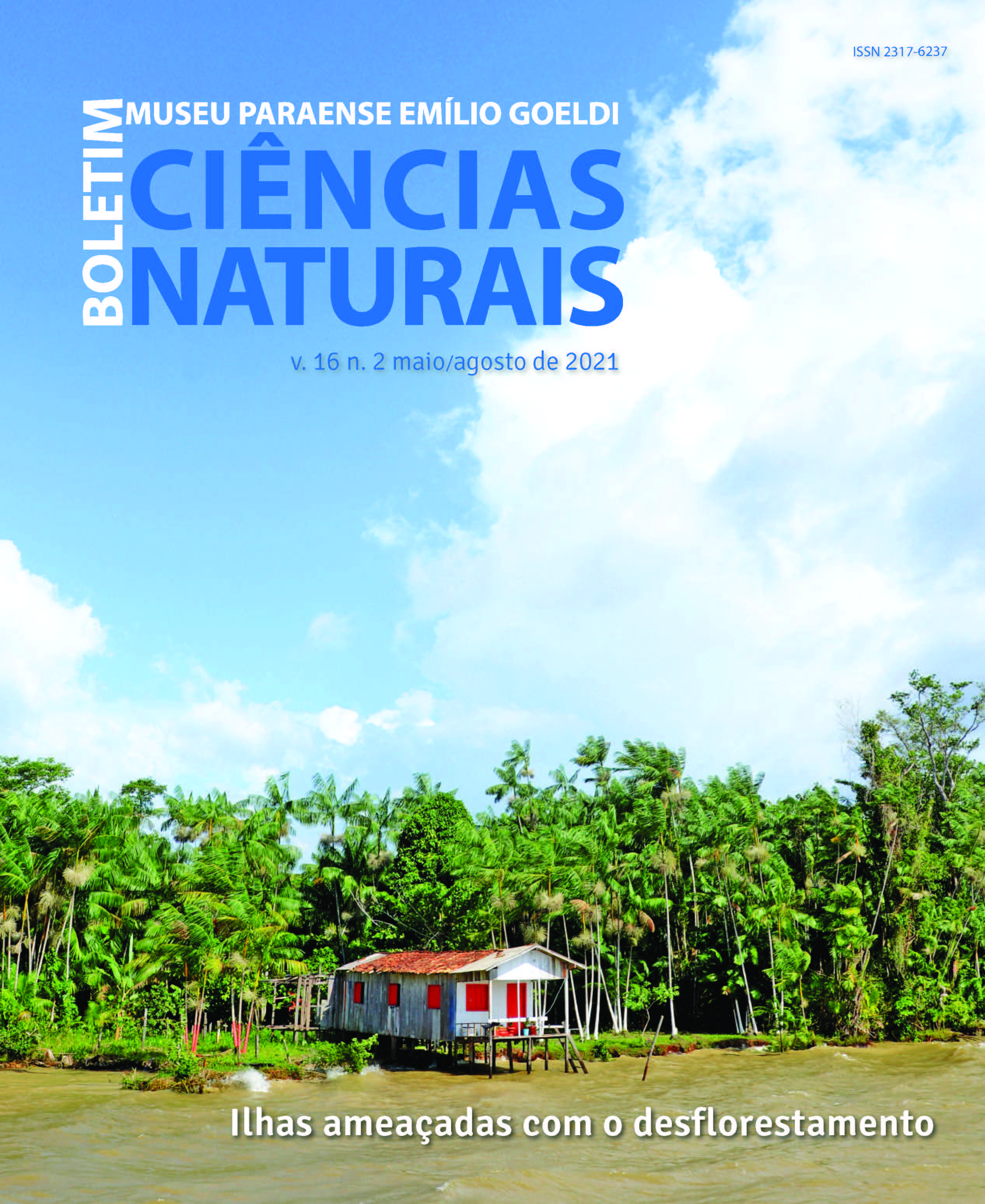Differences in leaf litter usage as food sources, refuge, and foraging substrates by invertebrates in forest and grasslands in the eastern Amazon
DOI:
https://doi.org/10.46357/bcnaturais.v16i2.326Keywords:
Detrivores, Land use, Litterbags, Microhabitat, PredatorsAbstract
Forest conversion into grassland changes the environment, microhabitat, and food availability. Leaf litter microhabitats change from complex leaf variety piles to nutrient-poor grass heaps. In this context, this work aimed to investigate how the invertebrate compositions in the forest and grassland leaf litters differ in litter usage. To achieve this goal, litterbag traps were placed in four secondary forest samples and four grassland samples from the eastern Amazon. After litter exposure, the species were morphotyped and classified according to leaf litter usage as food, refuge, or foraging substrates. Disturbancesensible groups characterized the secondary forest, while disturbance-tolerant species characterized the grasslands. The proportion of individuals using litter as food in grasslands is almost twice that in the secondary forest, while the percentage of individuals using leaf litter as refuge is eighteen times higher in the forest than in the grasslands. It seems that predators forage in the leaf litter of the forest just as much as in grasslands. The greater proportion of invertebrates using litter as a refuge in the forest relates to the limiting space in the habitat. In turn, food availability is scarce in grasslands, so there is urgency in using litter as a food source in this case.
Downloads
Published
Issue
Section
License
Publication means fully assigning and transferring all copyrights of the manuscript to the journal. The Liability Statement and
Assignment of Copyrights will be enclosed with the notice of acceptance. All the authors must sign the document and return it to the journal.








